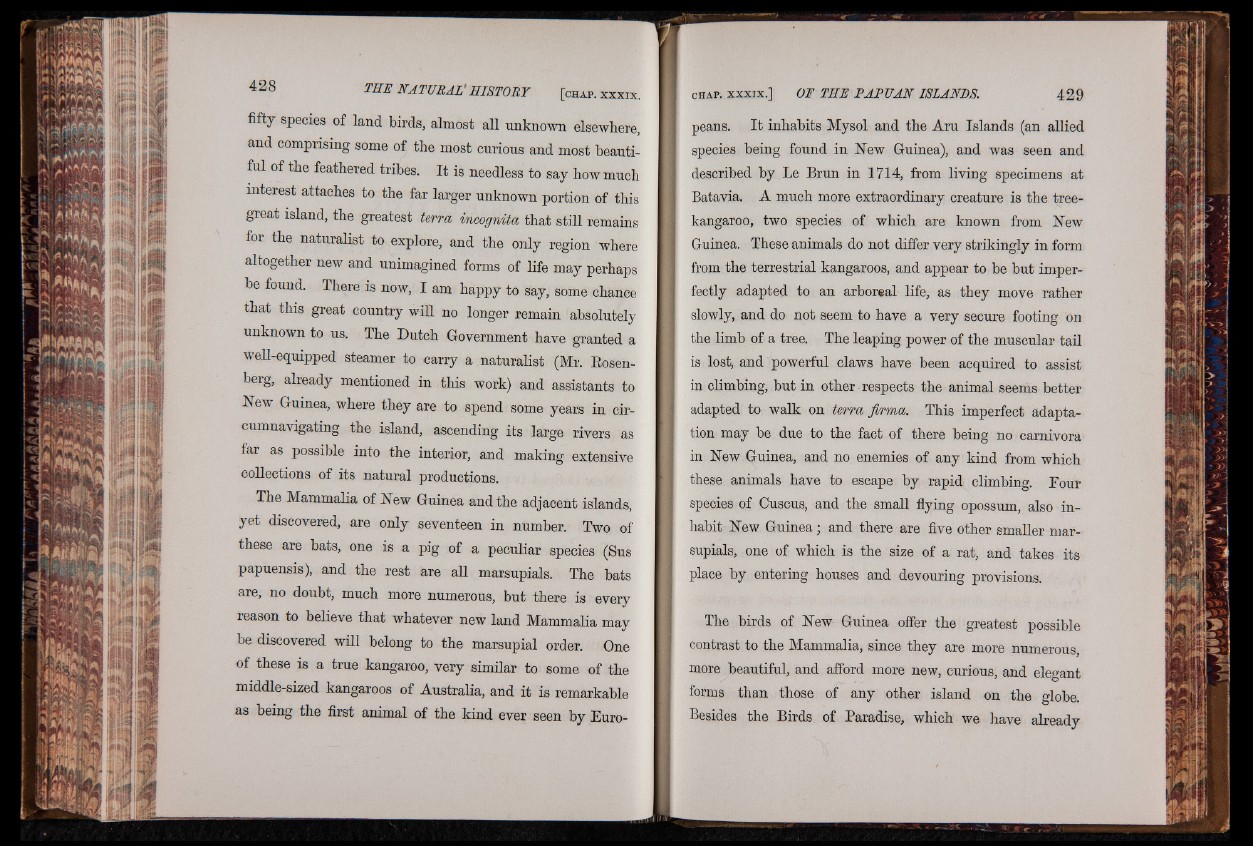
fifty species of land birds, almost all unknown elsewhere,
and comprising some of the most curious and most beautiful
of the feathered tribes. It is needless to say how much
interest attaches to the far larger unknown portion of this
great island, the greatest terra incognita that still remains
for the naturalist to exp] ore, and the only region where
altogether new and unimagined forms of life may perhaps
be found. There is now, I am happy to say, some chance
that this great country will no longer remain absolutely
unknown to us. The Dutch Government have granted a
well-equipped steamer to carry a naturalist (Mr. Rosenberg,
already mentioned in this work) and assistants to
Hew Guinea, where they are to spend some years in circumnavigating
the island, ascending its large rivers as
far as possible into the interior, and making extensive
collections of its natural productions.
The Mammalia of Hew Guinea and the adjacent islands,
yet discovered, are only seventeen in number. Two of
these are bats, one is a pig of a peculiar species (Sus
papuensis), and the rest are all marsupials. The bats
are, no doubt, much more numerous, but there is every
reason to believe that whatever new land Mammalia may
be discovered will belong to the marsupial order. One
of these is a true kangaroo, very similar to some of the
middle-sized kangaroos of Australia, and it is remarkable
as being the first animal of the kind ever seen by Europeans.
It inhabits Mysol and the Aru Islands (an allied
species being found in Hew Guinea), and was seen and
described by Le Brun in 1714, from living specimens at
Batavia. A much more extraordinary creature is the tree-
kangaroo, two species of which are known from Hew
Guinea. These animals do not differ very strikingly in form
from the terrestrial kangaroos, and appear to be but imperfectly
adapted to an arboreal life, as they move rather
slowly, and do not seem to have a very secure footing on
the limb of a tree. The leaping power of the muscular tail
is lost, and powerful claws have been acquired to assist
in climbing, but in other respects the animal seems better
adapted to walk on terra firma. This imperfect adaptation
may be due to the fact of there being no carnivora
in Hew Guinea, and no enemies of any kind from which
these animals have to escape by rapid climbing. Four
species of Cuscus, and the small flying opossum, also inhabit
Hew Guinea ; and there are five other smaller marsupials,
one of which is the size of a rat, and takes its
place by entering houses and devouring provisions.
The birds of Hew Guinea offer the greatest possible
contrast to the Mammalia, since they are more numerous,
more beautiful, and afford more new, curious, and elegant
forms than those of any other island on the globe.
Besides the Birds of Paradise, which we have already